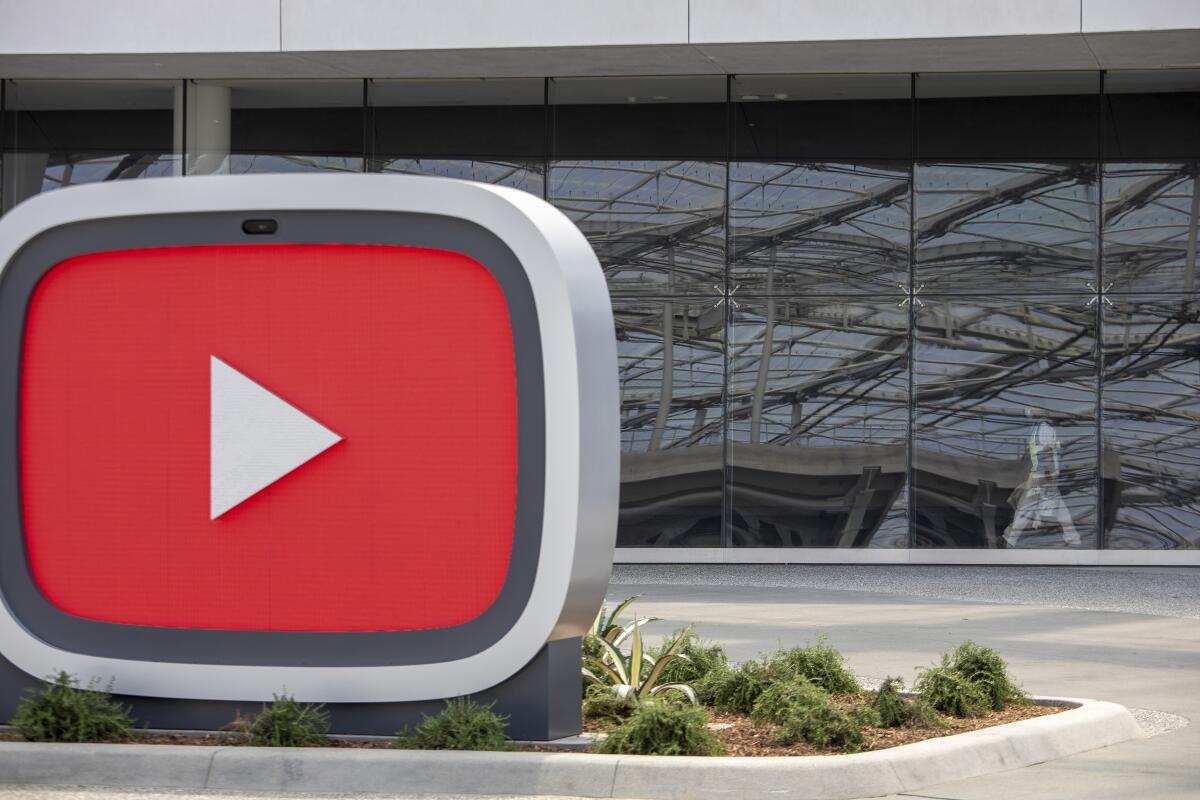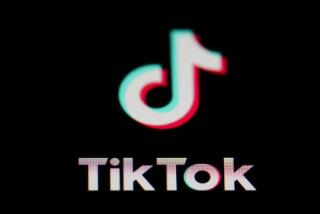As TikTok eats the world, YouTube makes a bid for creatorsâ hearts â and wallets

PLAYA VISTA â Gathered in the companyâs historic Spruce Goose hangar Tuesday morning, a host of YouTube leaders laid out a roadmap for the platformâs evolving relationship with both video creators and the music industry, announcing new monetization tools and industry partnerships in the cavernous event space where Howard Hughes once built a massive wooden airplane.
But while the tech executives seemed eager to outline their plans for the future of the creator economy, they were far more reticent to acknowledge the aggressively scaling industry upstart that, over the last few years, has taken a massive bite out of the online video ecosystem: TikTok.
Indeed, the Google subsidiaryâs âMade on YouTubeâ press event had been going on for about an hour before anyone explicitly cited TikTok â and even then, it was an audience member, during a question-and-answer period, who first named the elephant in the room.
TikTok, owned by Chinese technology firm ByteDance, is largely responsible for popularizing the short-form video format that YouTube, alongside other imitators, is now aping with its micro-video Shorts platform. And while Shorts has become a serious TikTok competitor â YouTube recently claimed 1.5 billion monthly viewers, about on par with where TikTok is expected to be â the medium is still largely synonymous with its pioneer.
âWeâve always worked in a pretty competitive marketplace,â said Tara Walpert Levy, YouTubeâs vice president for Americas and global content, in response to one journalistâs question about TikTokâs ongoing expansion in the United States, including Los Angeles. âOur approach has always been ⦠that we want to be the home for creators.â
It was a point to which company leadership repeatedly returned. YouTube Chief Executive Susan Wojcicki, speaking in a video, said the company is âdoubling down on [its] commitment to empower creators.â Neal Mohan, chief product officer, later described creators as YouTubeâs âheart.â
The dayâs big announcements seemed geared toward honing that creator-centric approach â and as YouTube scales back its scripted content ambitions, a renewed emphasis on user-generated videos is in line with the companyâs broader trajectory.
One change coming soon will let Shorts creators who reach 10 million views within 90 days apply for membership in the YouTube Partner Program, a revenue-sharing model that the company launched in 2007 to give creators some of the profit from ads served around their content. (Shorts creators previously were being paid out of a $100-million fund based on their engagement metrics, not ad revenue.)
Revenue sharing for Shorts âis the first time real revenue sharing is being offered for short-form video on any platform at scale,â Mohan said, adding that revenue from ads that run between Shorts will be pooled together and paid out to Shorts creators and also used to cover the cost of music licensing.
Shorts creators will keep 45% of the money, Mohan said. For long-form videos, that cut has historically been 55%; YouTube leaders attributed the smaller cut for Shorts as, in part, an effort to keep the program sustainable.
Another change will add a new tier to the Partner Program, allowing creators with smaller fan bases to still make money from their fans through features such as membership programs.
As the creator economy continues to grow and digital artists demand better, fairer ways to get paid, YouTubeâs announcements suggest that the company thinks short-form filmmakers will have a sizable role to play in the companyâs future â and perhaps also that wooing them away from TikTok is a business imperative.
Itâs a move that capitalizes on the goodwill YouTube already has among some creators. In January, a video by longtime vlogger Hank Green went viral after he favorably compared YouTubeâs revenue-sharing model to TikTokâs Creator Fund, a static pool of money that the company splits among top creators.
TikTokâs approach is âa giant hole in the creator economy,â Green said at the time, because with a fixed amount of money up for grabs, the per-person payouts decrease as the number of eligible creators goes up. (TikTok subsequently announced a revenue-sharing system of its own, TikTok Pulse, that was more in line with YouTubeâs model.)
Tuesdayâs event also saw the company announce new infrastructure for helping long-form video creators incorporate licensed music into their content â with singer-songwriter Jason Derulo on deck to explain how closer collaboration between artists and creators benefits them both.
âThe biggest issue [with tapping into social media fan bases] has always been the rights,â said Derulo, sporting a red jacket covered in Marvel movie-themed patches. âAnd from the artist standpoint: I want my music to be heard. I want my music to be on your page.â
Historically, YouTubers have had to give up ad revenue if they incorporated licensed music into their videos, said Amjad Hanif, YouTubeâs vice president of product management and creator products. But through the companyâs new platform, Creator Music, creators soon will be able to browse songs and then either license them outright or enter into a revenue-sharing agreement with the original musicians, Hanif said.
According to Derulo, itâs a move that indicates how the entertainment industry as a whole is evolving in the era of internet-created celebrities.
âWhen I was growing up, a lot of people had Britney Spears on their wall, or NSYNC,â the singer said. âBut now ⦠they might have a Bryce Hall or a Jake Paul.
âThe modern-day rock star,â Derulo continued, âhas changed.â
More to Read
Inside the business of entertainment
The Wide Shot brings you news, analysis and insights on everything from streaming wars to production â and what it all means for the future.
You may occasionally receive promotional content from the Los Angeles Times.











